Red yeast rice extract is a traditional Chinese medicine and food product. It is made of high-quality non-polluting non-GMO indica rice as raw material, and high-quality monascus purpureus is isolated by modern bioengineering technology. Natural, safe and beneficial food additives for human health.
This product is a red powder with pure color tone, good light and heat stability, pure natural, safe without side effects, and has a wide range of PH applications. It is an ideal colorant for natural green foods. The application range is very wide, including food (meat products, fruit juice, colored wine, jam, beverages, candy, cakes, soy sauce, health vinegar, etc.); pharmaceuticals (drug colorants, functional health products); cosmetics.
For a long time, red yeast rice has been a traditional Chinese medicine for both medicinal and edible purposes. However, the real attention of red yeast rice in the world can be traced back to the 1970s. In 1979, Professor Akira Endo of Japan discovered and isolated the active substance Monacolin K (Monacolin K) from the fermentation broth of red yeast rice. Scientists all over the world began to pay new attention to red yeast rice and monacolin compounds. In 1985, American scientists Goldstein and Brown further found out the mechanism of action of Monacolin-k, and won the Nobel Prize for it. The red song also became famous because of this.
Let’s introduce it to you in detail!
- The main active ingredientsof red yeast rice extract
The main functional ingredients of Monascus are Monascus pigment, lovastatin (MonacolinK), ergosterol, enzyme active substances, γ-aminobutyric acid, plant hormones and other compounds.
- Red yeast rice extract benefits
A. Anti-obesity activity
Both the water extract and ethanol extract of red yeast rice inhibited the proliferation and differentiation of 3T3-L1 preadipocytes. Monascus water extract can improve the lipolytic activity in mature adipocytes, but does not affect the activity of heparin-releasing lipoprotein lipase.
B. Anticancer activity
Both lovastatin and red yeast extract can significantly inhibit the proliferation of colon cancer cells HCT-116 and HT-29, and can promote cell apoptosis, and the part of red yeast extract after removing lovastatin still has effect on colon cancer cells. Inhibitory effect, colon cancer cells cultured with mevalonate can reverse the tumor suppressive effect of lovastatin, but cannot reverse the tumor suppressive effect of red yeast extract.
C. Prevention and treatment of Alzheimer’s
The red yeast rice ethanol extract has a stronger protective effect than the equivalent amount of pure monacolinK, because red yeast rice extract has many antioxidant and anti-inflammatory active components in addition to monacolinK, and the potential synergistic effect of these components makes the Red yeast rice more effectively inhibited Aβ40-induced inflammatory response and oxidative damage. Therefore, the use of red yeast rice can develop new healthy food for the prevention and treatment of Alzheimer’s disease.
D. Prevention and treatment of osteoporosis
The ergosterol contained in red yeast rice is the precursor of fat-soluble vitamin D2, which is produced by ultraviolet photochemical reaction.
E.Red yeast rice extract for cholesterol
Monascus also has anti-inflammatory, hypotensive, and hypolipidemic effects. Lower blood lipids and total cholesterol, reductase inhibitor, directly inhibit HNG-coA reductase, block cholesterol synthesis.
- Nutritional value of red yeast rice extract
A. Modern medical research reports believe that red yeast rice has the effect of lowering blood pressure and blood lipids, and the monascin contained in it can prevent the production of cholesterol K.
B. Red yeast rice has a purple-red outer skin and a red interior with a slightly sour taste and light taste. It has a strong tinting power to protein, so it is often used as a food coloring pigment.
C. Compared with chemically synthesized red pigment, red yeast rice has the advantages of non-toxicity and safety, and also has the effects of invigorating the spleen and digesting food, promoting blood circulation and removing blood stasis.
4. The quality index of red yeast rice extract
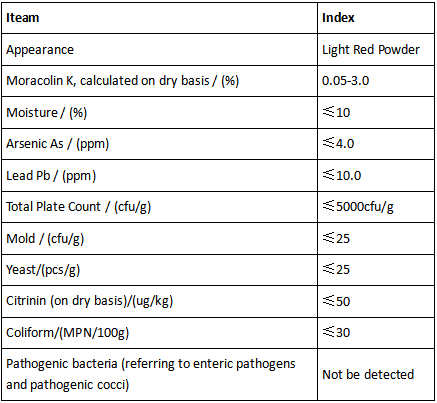
- Specifications of red yeast rice extract
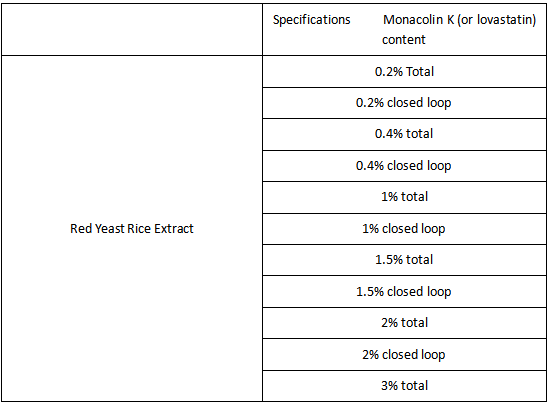
- The relationship between monacolin K and lovastatin
In 1979, Japanese scholar Endo Zhang (Endo) and others isolated the active substance from the fermentation broth of Monascus ruber, and named it Monacolin K with the root of the Latin name of Monascus, which attracted worldwide attention. Unfortunately, their work on stereochemistry was not included in their structural identification of Monacolin K. A year later, in 1980, the same compound isolated from Aspergillus terreus fermentation broth was named Mevinolin by Albert et al. from Merck Company in the United States. The stereochemical structure was included in the identification of its structure, and they began to develop new drugs. After research, Merck company developed mevinolin into the first new statin drug (chemical synthesis), named Lovastatin, and applied for a patent.
From this it can be seen that:
Monacolin K is the same compound as Lovastatin; Monacolin K was discovered earlier than Lovastatin; Monacolin K is the product of the fermentation of Monascus; Lovastatin is the product of the fermentation of Aspergillus; It is named after the Latin prefix Mona-, which is the conventional naming of scientific discoveries and has no specificity; Lovastatin is named by the Merck company, which is the company’s proper name and has exclusiveness.
- Monacolin K and its structural characteristics
The active ingredients of red yeast rice extract are composed of Monacolin-K and its derivatives. The main component of Monacolin-K has two isomers: lactone-type Monacolin-K and acid-type Monacolin-K, which we call for short. for closed-loop and open-loop Monacolin-K.
The closed-ring Monacolin-k is only a prodrug, which is inactive by itself, and needs to be hydrolyzed by the carboxylesterase produced by the human body to change its structure and become an active open-ring Monacolin-k. The open-loop Monacolin-k is stronger than the closed-loop Monacolin-k. The presence or absence of open-ring Monacolin-k is also the key to identify whether the product is a fermented functional red yeast rice. General functional red yeast rice contains a certain proportion of open-ring structure of Monacolin-k, and synthetic lovastatin is generally closed-loop. It can be obtained by high performance liquid phase.
- Recommended dosage of red yeast rice extract
Based on the monacolin K contained in different specifications, the daily dosage should not exceed 10mg.

The above is our comprehensive introduction to red yeast rice extract. If you like it, please contact us for quotation and more detailed information. We can provide you with best red yeast rice extract.
Xi’an Herb Bio is a Chinese supplier specializing in herbal extracts, food additives, fruit & vegetable powder. If you are interested in products, please click here to inquire at any time. We will reply you as soon as possible.


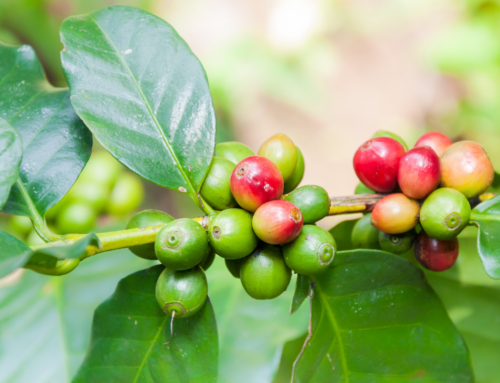
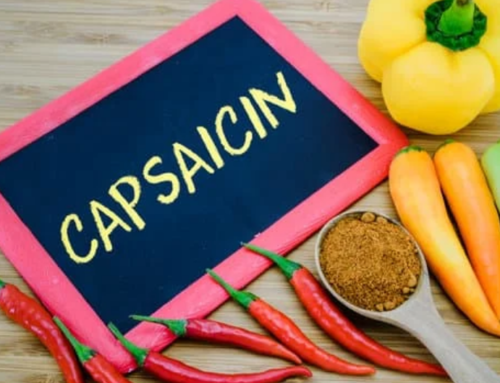
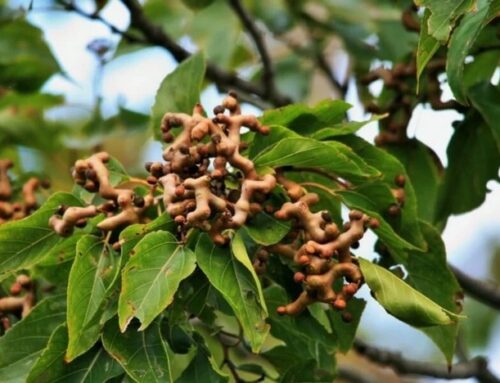

Leave A Comment